What to Know About 3G Sunsetting [Updated June 2022]
Learn how 3G sunsetting will affect your IoT deployment, and how you can transition to other networks.
Ready to build your IoT product?
Create your Particle account and get access to:
- Discounted IoT devices
- Device management console
- Developer guides and resources
What is the 3G Sunset?
20 years after its commercial launch, major telecom providers are preparing to sunset their 3G networks. They’re doing so to free up both spectrum and infrastructure that will power the faster 4G LTE and 5G networks that are currently being deployed around the world.
That means that any cellular-connected device that connects to 3G networks will become inoperable.
“There’s a finite amount of radio bandwidth. It’s a physical constraint for cellular carriers trying to roll out new services,” JT Zemp, Particle’s Cellular Tech Lead, explained. “For cell providers to make more money, increase subscriber count, and do more data-intensive things like video streaming or telematics, they’re devising new and better ways for cellular devices to communicate with the Internet.”
This isn’t the first time that older technology has been deprecated. Most cell carriers moved away from 1G in the late 2000s. That’s why you don’t see those giant brick-like cellphones anymore.
The 3G Sunset Schedule
Major cellular providers have either already sunset their 3G networks, or are planning to by the end of 2022. Here are the sunset dates for the major U.S.-based carriers:
- AT&T - February 22, 2022
- T-Mobile - July 01, 2022
- T-Mobile (Sprint) - March 31, 2022
- Verizon - December 31, 2022
The Progress of the 3G Sunset in the United States - June 2022 Update
June 2022 3G Sunset Update
The Particle team provided more insight into the progress of the AT&T 2G/3G sunset in mid-June 2022, using insights from our distributed fleet to identify patterns and prioritize devices for replacement.
As of June, the AT&T sunset in the USA was still in process after a brief lull. We observed a marked decline in 3G coverage and signal quality in mid-late February and a gradual plateau throughout May.
In the first half of June, Particle observed a strong acceleration in AT&T’s decommissioning of its 3G network. At this stage, 80% of U.S.-based Particle 2G/3G devices were no longer connecting to AT&T, an almost 30% increase from June 1.
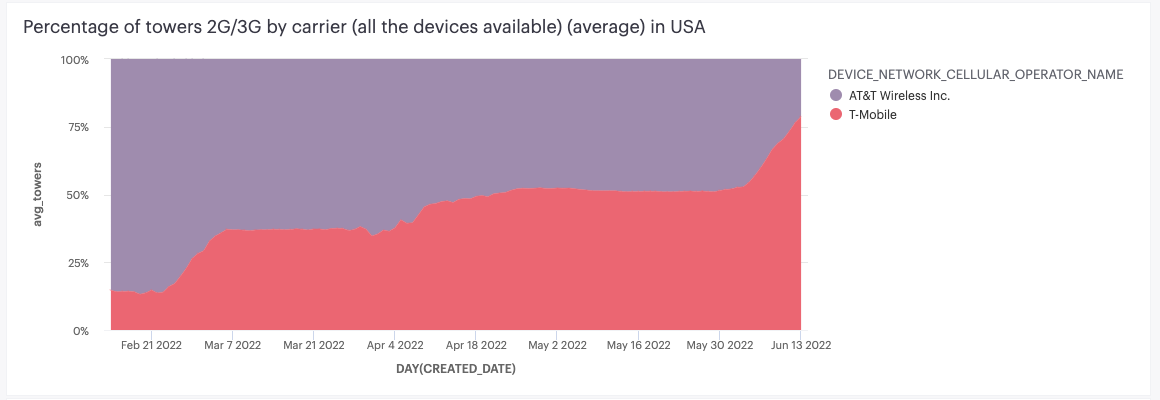
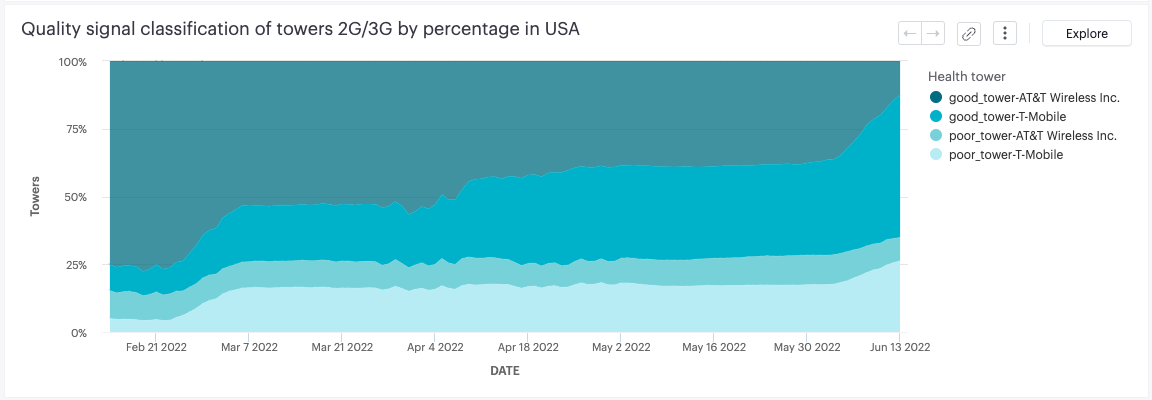
All signs are pointing toward this trend continuing, potentially bringing the AT&T sunset to completion in the next few weeks.
Particle has also been closely keeping watch over T-Mobile’s USA 3G sunset, observing that T-Mobile is still maintaining the majority of its 2G/3G infrastructure. 2G/3G devices with T-Mobile network availability will migrate automatically.
However, T-Mobile’s coverage in the US is not equivalent to AT&T’s, so many devices will not have coverage available and will go offline. Particle is estimating as many as 30% of 2G/3G devices will have no fallback coverage with T-Mobile networks.
April 2022 3G Sunset Update
According to Ismael Sotelo, a Technical Support Engineer at Particle, the AT&T sunset is finally underway, and its pace is picking up.
“Before turning off its 3G network, AT&T towers represented 86 percent of the total 2G/3G towers that Particle devices were connected to,” Ismael said. “At the moment, AT&T towers only represent 53 percent of the towers our devices are connecting to.”
Ismael pointed out that this change is not only affecting the number of towers available, but is also impacting the signal quality from both AT&T and T-Mobile.
“If we assume a ‘good’ tower has at least 35 percent signal strength, according to our RF characterization metrics, 86 percent of all AT&T 2G/3G towers had a good signal before the sunset,” Ismael said. “Now, only 70 percent of the towers provide a ‘good’ signal. This number is quickly decreasing.”
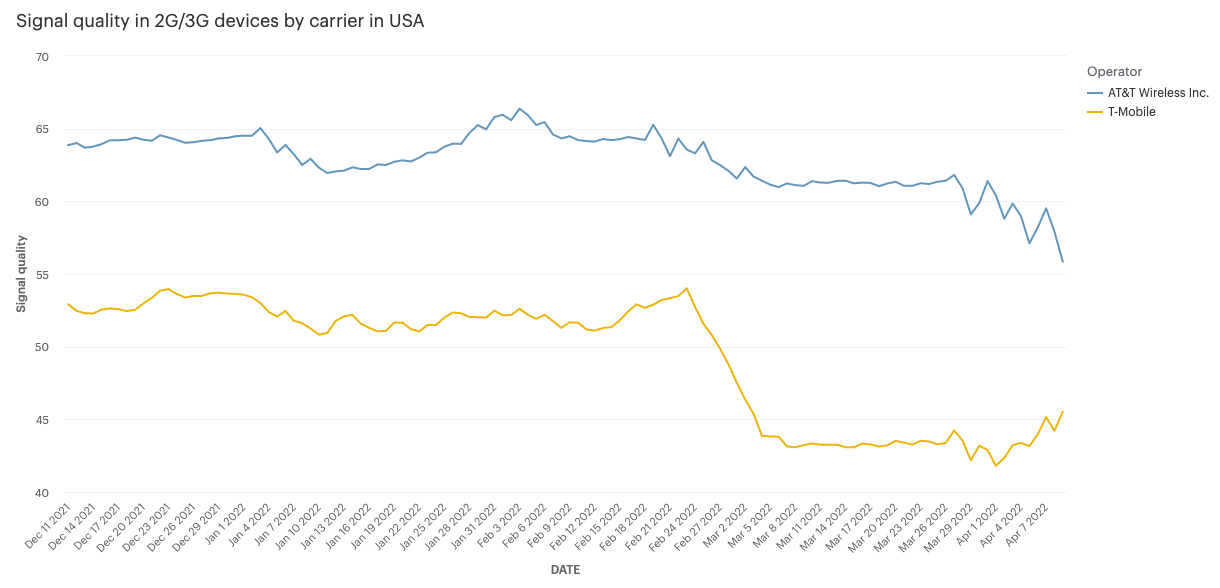
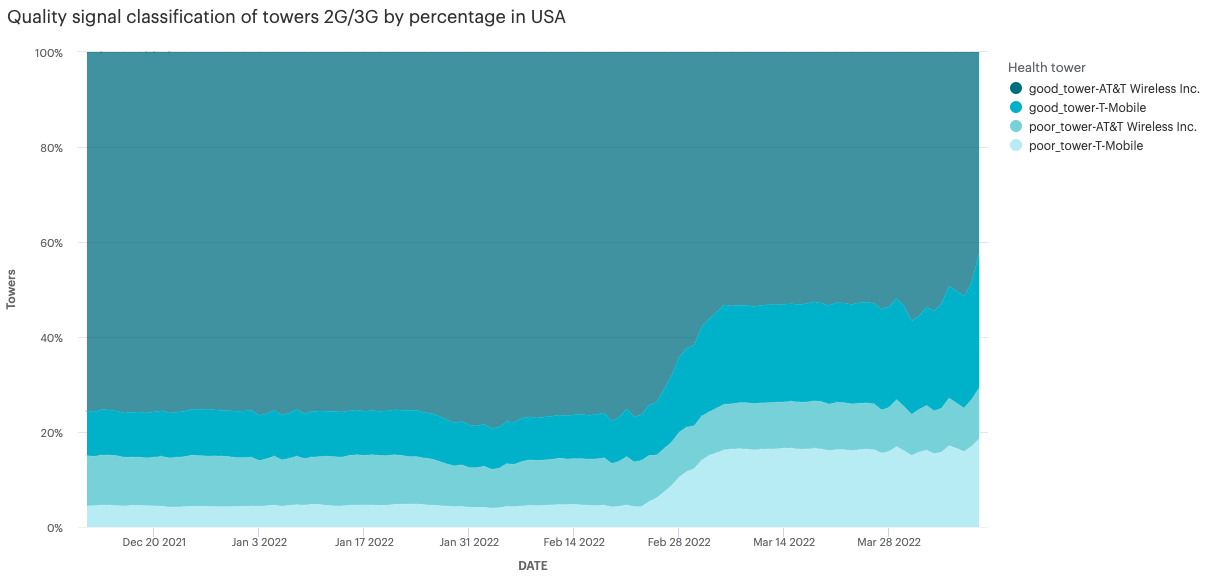
As of mid-April, nearly half of the 2G/3G devices Particle is tracking are connecting to T-Mobile towers. The pace at which AT&T’s networks are dropping devices has rapidly increased since March 2022.
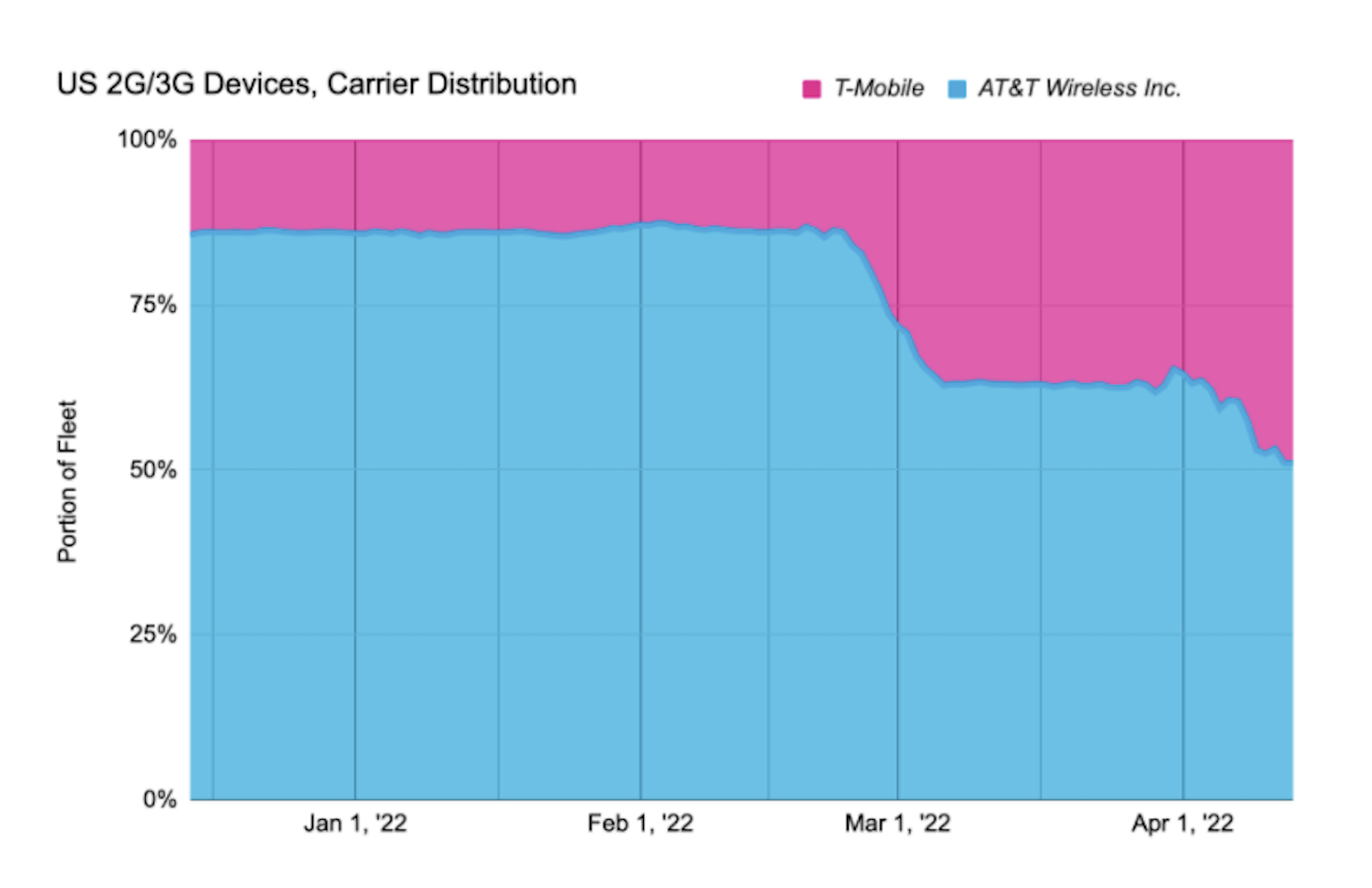
Despite AT&T’s announcement of a February 2022 sunset, the actual process has been much more gradual. Carriers typically don’t make this information available to smaller fleet operators. Particle has insights into connectivity across our customer base, and can give you a much more proactive way to prioritize and plan for migrations based on up-to-date data.
What Does the 3G Sunset Mean for IoT Deployments?
3G is a core cellular IoT technology. Many devices that comprise the IoT, from home alarm systems and smart thermostats to fleet management devices and industrial machinery, rely on 3G networks.
If your devices rely on 3G technology, the sunsetting of 3G networks across major carriers means one of two things:
- Your devices will not be able to connect with cell towers.
- If your devices are able to roam, you may be able to switch over to T-Mobile's 3G network until that is also deprecated.
Most cell carriers have been communicating with customers about the 3G sunset for the last few years. Your IoT partner should also have been preparing your deployments for a transition away from 3G.
“If you’re a Particle customer, you knew about this a long time ago,” JT said. “We’ve been working to facilitate a transition to LTE for our customers for a while now.”
It’s also important to be mindful of the risks and rewards that the 3G sunset will bring for your IoT projects.
“Chances are, with the new technologies being rolled out, you’ll see improvements in battery life, data speeds, and bandwidth,” JT said. “The risk comes in when you have to refit your devices with new modems. That means new certifications, firmware, and hardware.”
How to Transition Away from 3G Networks
If your IoT deployment relies on 3G networks for connectivity, you should have a plan in place to transition away from it and onto another network. Here’s a checklist you can follow to ensure you’re not missing any key steps in
-
Determine if your geography is affected by the 3G sunset. In The U.S., major carriers will sunset 3G by the end of 2022. In Canada, major carriers plan to keep their 3G networks live until 2025. Many European countries have already deprecated their 3G networks, but continue to maintain 2G. Check with your carriers or IoT platform provider to see what the timeline is.
-
Compile an inventory of devices that are using 3G networks. Determine how long it will take to change out the modems if needed.
-
See if your devices’ modems support other Radio Access Technologies, such as 4G LTE, Cat-M1, NB-IoT, etc. that have a longer runway before they’re deprecated. If they do, you may be able to update the firmware on your devices so they can connect to one of these networks. If they do not, you will need to get new modems, get them recertified, and physically swap the old modems out of your entire fleet.
-
Prepare to negotiate with your SIM provider to get SIM cards with new roaming characteristics.
-
Locate your devices and replace the modems.
-
Evaluate the connection between your devices and your cloud.
Of course, you could choose to do nothing. But as JT says, that means your IoT product just becomes a T.
What to Do If You're a Particle Customer
For Particle customers, our team has provided extensive documentation on what you should do to transition your fleet away from 3G. You can find that documentation here.